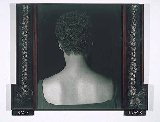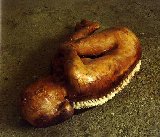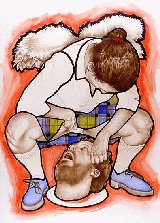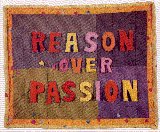|
|
Toronto Website Design & Toronto SEO
Feminist Aesthetics


By Carolyn Korsmeyer
“Feminist aesthetics” does not label a variety of aesthetics in the way that, for example, the terms “virtue theory” and “naturalized epistemology” qualify types of ethics and theories of knowledge. Rather, to refer to feminist aesthetics is to identify a set of perspectives that pursue certain questions about philosophical theories and their assumptions regarding art and aesthetic categories. Feminists in general have concluded that, despite the seemingly neutral and inclusive theoretical language of philosophy, virtually all areas of the discipline bear the mark of gender in their basic conceptual frameworks. Those who work in aesthetics inquire into the ways that gender influences the formation of ideas about art, artists, and aesthetic value. Feminist perspectives in aesthetics are also attuned to the cultural influences that exert power over subjectivity: the way that art both reflects and perpetuates the social formation of gender, sexuality, and identity.
Aesthetics is by nature rather more interdisciplinary than are some other areas of philosophy, for this field articulates with art practices and the critical disciplines. Feminist perspectives in aesthetics have been contributed not only by philosophers but also by art historians, musicologists, and theorists of literature, film, and performance, among others. There are practical implications for the discoveries that emerge from feminist investigations: analyses of the historical conceptual frameworks that govern aesthetics and philosophy of art help to account for the disparate numbers of men and women who have been influential practitioners of the arts, for example. Philosophical theories adapted by feminists also have been highly influential in the critical interpretation of art and popular culture, and sometimes in the development of contemporary artistic practice. What is more, feminist aesthetics pursues inquiries and critiques that reach into the values at the very foundations of philosophy, examining concepts that often do not directly refer to males and females at all, yet whose hierarchies are imbued with gendered significance.

1. Art and Artists: Historical Background
2. Art and Artists: Creativity and Genius
3. Aesthetic Categories and Feminist Critiques
4. Feminist Practice and the Concept of Art
5. The Body in Art and Philosophy
Bibliography
- Banes, Sally. (1998). Dancing Women: Female Bodies on
Stage. London: Routledge.
- Battersby, Christine. (1989). Gender and Genius: Towards a
Feminist Aesthetics. Bloomington: Indiana University Press.
- __________. (1998). The Phenomenal Woman: Feminist Metaphysics
and the Patterns of Identity. New York: Routledge.
- Beauvoir, Simone de. The Second Sex. (1989/49).Trans. H.M.
Parshley. New York: Vintage Books.
- Bindman, David. (2002). Ape to Apollo: Aesthetics and the Idea
of Race in the 18th Century. Ithaca: Cornell University
Press.
- Brand, Peg Zeglin, ed. (2000). Beauty Matters.
Bloomington: Indiana University Press.
- Brand, Peggy Zeglin and Carolyn Korsmeyer. Eds. (1995).
Feminism and Tradition in Aesthetics. University Park, PA:
Pennsylvania State University Press.

- Burke, Edmund. (1957/1968). A Philosophical Enquiry into the
Origin of Our Ideas of the Sublime and Beautiful. ed. James T.
Boulton. Notre Dame: University of Notre Dame Press.
- Butler, Judith.(1993). Bodies That Matter: On the Discursive
Limits of “Sex.” New York: Routledge.
- __________. (1990). Gender Trouble: Feminism and the Subversion
of Identity. New York: Routledge.
- Campbell, Sue. (1997). Interpreting the Personal: Expression
and the Formation of Feelings. Ithaca: Cornell University
Press.
- Carroll, Noël. (1995). “The Image of Women in Film: A
Defense of a Paradigm.” Feminism and Tradition in
Aesthetics. Peggy Zeglin Brand and Carolyn Korsmeyer, Eds.
University Park, PA: Pennsylvania State University Press: 371-391.
- __________. (2000). Theories of Art Today. Madison:
University of Wisconsin Press.
- Chadwick, Whitney. (1990). Women, Art, and Society.
London: Thames and Hudson, Ltd.
- Chicago, Judy and Edward Lucie-Smith. (1999). Women and Art:
Contested Territory. New York: Watson-Guptill.
- Citron, Marcia J. (1993). Gender and the Musical Canon.
Cambridge: Cambridge University Press.
- Copjec, Joan. (2002). Imagine There's No Woman: Ethics and
Sublimation. Cambridge, MA: MIT Press.
- Creed, Barbara. (1993). The Monstrous Feminine: Film, Feminism,
Psychoanalysis. London: Routledge.
- Curran, Angela. (1998). “Feminism and the Narrative
Structures of the Poetics.” Feminist Interpretations
of Aristotle. Cynthia Freeland, ed. University Park, Pa:
Pennsylvania State University Press, pp. 289-326.
- Danto, Arthur. (1981), The Transfiguration of the Commonplace:
A Philosophy of Art. Cambridge, MA: Harvard University Press.
- Davies, Stephen. (1991). Definitions of Art. Ithaca:
Cornell University Press.
- Devereaux, Mary. (2003). “Feminist Aesthetics.” The
Oxford Handbook of Aesthetics. Jerrold Levinson, ed. New York:
Oxford University Press, pp. 647-666.
- __________. (1998) “Autonomy and its Feminist Critics.”
Encyclopedia of Aesthetics, Vol. 1. Michael Kelly, Ed. New
York: Oxford University Press: 179-182.
- __________. (1995). “Oppressive Texts, Resisting Readers, and
the Gendered Spectator.” Feminism and Tradition in
Aesthetics. Peggy Zeglin Brand and Carolyn Korsmeyer, eds.
University Park, Pa: Pennsylvania State University Press, pp.
121-41.
- Dickie, George. (1996). The Century of Taste: The Philosophical
Odyssey of Taste in the Eighteenth Century. New York: Oxford
University Press.
- Doane, Mary Ann. (1991). Femmes Fatales: Feminism, Film Theory,
Psychoanalysis. New York: Routledge.
- Eaton, Anne. (2005). “Feminist Aesthetics and
Criticism.” Encyclopedia of Philosophy, 2nd
ed. Macmillan.
- Ecker, Gisela, ed. (1986). Feminist Aesthetics. Trans.
Harriet Anderson. Boston: Beacon Press.
- Felski, Rita. (1989). Beyond Feminist Aesthetics: Feminist
Literature and Social Change. Cambridge, MA: Harvard University
Press.
- __________. (1998). “Critique of Feminist Aesthetics.”
Encyclopedia of Aesthetics, Vol. 2. Michael Kelly, ed. New
York: Oxford University Press: 170-72.
- Florence, Penny and Nicola Foster. eds. (2000). Differential
Aesthetics: Art Practices, Philosophy, and Feminist
Understandings. Aldershot, UK: Ashgate.
- Freeland, Cynthia. (2001). But Is It Art? An Introduction to
Art Theory. New York: Oxford University Press.
- __________. (1998a). “Film Theory.” A Companion to
Feminist Philosophy. Malden, MA: Blackwell: 353-360.
- __________. (1998b). The Naked and the Undead. New York:
Westview.
- Freeman, Barbara Claire. (1995). The Feminine Sublime: Gender
and Excess in Women's Fiction. Berkeley and Los Angeles:
University of California Press.
- __________. (1998). “Feminine Sublime.”Encyclopedia
of Aesthetics, Vol 4. Michael Kelly, ed. New York: Oxford
University Press: 331-34.
- Gatens, Moira. (1991). Feminism and Philosophy: Perspectives on
Difference and Equality. Bloomington: Indiana University
Press.
- Grosz, Elizabeth. (1994).Volatile Bodies: Toward a Corporeal
Feminism. Bloomington: Indiana University Press.
- Hein, Hilde and Carolyn Korsmeyer, eds. (1993). Aesthetics in
Feminist Perspective. Bloomington: Indiana University Press.
- hooks, bell. (1992). “The Oppositional Gaze.” Black
Looks. Boston: South End Press, 1992.
- Howes, David, ed. (1991). The Varieties of Sensory
Experience. Toronto: University of Toronto Press.
- Irigaray, Luce. (1974/85). Speculum of the Other Woman.
Trans. Gillian C. Gill. Ithaca: Cornell University Press.
- Kant, Immanuel.(1798/1978) Anthropology from a Pragmatic Point
of View. Trans. Victor Lyle Dowdell. Carbondale: Southern Illinois
University Press.
- __________. (1790/1987). Critique of Judgment. Trans.
Werner Pluhar. Indianapolis: Hackett.
- Kaplan, E. Ann. (1990). Psychoanalysis and Cinema. New
York: Routledge, 1990.
- Klinger, Cornelia. (1998). “Aesthetics.” A
Companion to Feminist Philosophy. Alison M. Jaggar and Iris Marion
Young, eds. Malden, MA: Blackwell: 343-352.

- __________. (1997). “The Concepts of the Sublime and the
Beautiful in Kant and Lyotard.” Feminist Interpretations of
Immanuel Kant. Robin May Schott, ed. University Park, Pa:
Pennsylvania State University Press, 1997: 191-211.
- Korsmeyer, Carolyn. (2004). Gender and Aesthetics: An
Introduction. London: Routledge.
- _________. “Perceptions, Pleasures, Arts: Considering
Aesthetics.” Philosophy in a Feminist Voice: Critiques and
Reconstructions. Janet Kourany, ed. Princeton: Princeton
University Press1998: 145-72.
- Kristeller, Paul Osker. (1951-52). “The Modern System of the
Arts: A Study in the History of Aesthetics,” Parts I and II,
Journal of the History of Ideas 112 and 113: 496-527, 17-46.
Also in Essays on the History of Aesthetics. Peter Kivy, ed.
Rochester, NY: University of Rochester Press, 1992.
- Kristeva, Julia. (1982). The Powers of Horror: An Essay on
Abjection. Trans. Leon S. Roudiez. New York: Columbia University
Press.

- Lauter, Estella. (1993). “Re-enfranchising Art: Feminist
Interventions in the Theory of Art.” Aesthetics in Feminist
Perspective. Hilde Hein and Carolyn Korsmeyer, Eds. Bloomington:
Indiana University Press: 21-34.
- Lorraine, Renée. (1993). “A Gynecentric
Aesthetic.” Aesthetics in Feminist Perspective. Hilde
Hein and Carolyn Korsmeyer, Eds. Bloomington: Indiana University Press:
35-52.
- Lippard, Lucy. (1995). The Pink Glass Swan: Selected Essays on
Feminist Art. New York: The New York Press.
- McClary, Susan. (1991) Feminine Endings: Music, Gender, and
Sexuality. Minnesota: University of Minnesota Press.
- Mattick, Paul Jr. Ed. (1993). Eighteenth-Century Aesthetics and
the Reconstruction of Art. Cambridge: Cambridge University
Press.
- Moi, Toril. (1985). Sexual/Textual Politics: Feminist Literary
Theory. London: Metheun.
- Mulvey, Laura. (1996). Fetishism and Curiosity.
Bloomington: Indiana University Press, 1996.
- __________. (1989). Visual and Other Pleasures. London:
Macmillan, 1989.

- Nead, Lynda. (1992). The Female Nude: Art, Obscenity and
Sexuality. London: Routledge.
- Nochlin, Linda. (1988). “Why Have There Been No Great Women
Artists?” Women, Art, and Power and Other Essays. New
York: Harper and Row.
- Parker, Rozsika and Griselda Pollock. (1981). Old Mistresses:
Women, Art and Ideology. New York: Pantheon Books.
- Pollock, Griselda. (1988). Vision and Difference: Femininity,
Feminism and the Histories of Art. London: Routledge.
- Reckitt, Helena, ed. (2001). Art and Feminism. New York:
Phaidon.
- Scheman, Naomi. (1993). “Thinking about Quality in Women's
Visual Art.” Engenderings: Constructions of Knowledge,
Authority, and Privilege. New York: Routledge.
- Shiner, Larry. (2001). The Invention of Art: A Cultural
History. Chicago: University of Chicago Press.
- Shusterman, Richard. (1993.) “On the Scandal of Taste.”
Mattick, Paul Jr., Ed. Eighteenth-Century Aesthetics and the
Reconstruction of Art. Cambridge: Cambridge University Press:
96-119.

- Silverman, Kaja. (1992). Male Subjectivity at the Margins.
New York: Routledge.
- Silvers, Anita. (1998). “Feminism: An Overview.”
Encyclopedia of Aesthetics. Michael Kelly, ed. New York:
Oxford University Press: Vol 2, 161-67.
- Steiner, Wendy. (2001). Venus in Exile: The Rejection of Beauty
in Twentieth-Century Art. New York: The Free Press.
- Woodmansee, Martha. (1994). The Author, Art, and the Market:
Rereading the History of Aesthetics. New York: Columbia University
Press.
- Worth, Sarah. (1998). “Feminism and Aesthetics.”
The Routledge Companion to Aesthetics. Berys Gaut and Dominic
McIver Lopes, Eds. London: Routledge.
- Zegher, M. Catherine de, ed. (1996). Inside the Visible: an
elliptical traverse of 20th century art in, of, and from the
feminine. Cambridge, MA: MIT Press.
|
|
|
|









